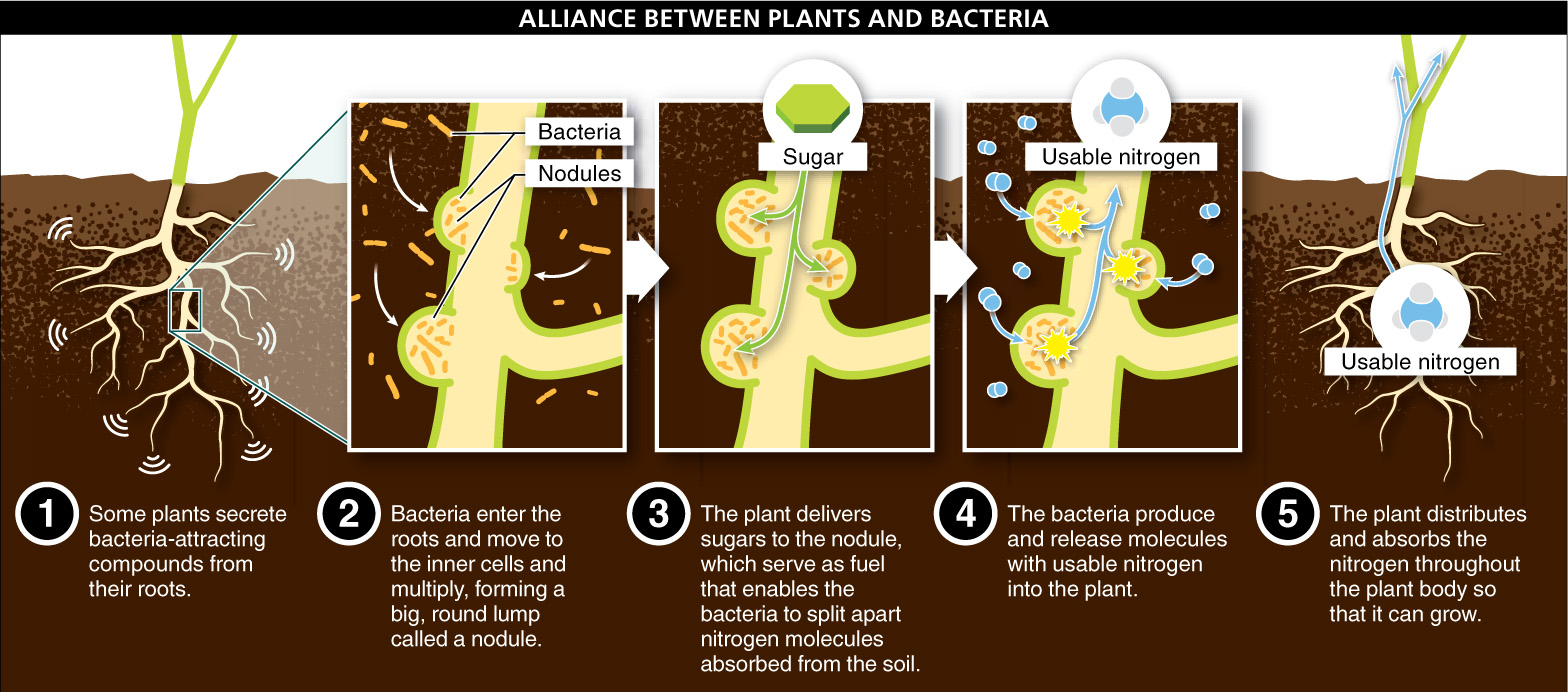There is a sad irony to floating in a lifeboat in the ocean. Despite being surrounded by water, a person is likely to die from lack of water, because salt water just isn’t drinkable for a human. Plants encounter a similarly ironic situation when it comes to one of the most important components in their diet: nitrogen.
Burying dead fish in their fields can help farmers produce more food. Why?
Nitrogen is the most common element in our atmosphere. Almost 80% of the air around us is nitrogen. But despite its abundance, lack of nitrogen is, after lack of water, the factor that limits most plant growth. Nearly every terrestrial plant outside the tropics would grow larger with more nitrogen. Early farmers recognized this fact and would bury dead fish along with their corn crops. As the fish decomposed, the rotting organic material increased the soil nitrogen that was available for the plants’ use, significantly improving the size and health of the corn plants. Today, people regularly treat their crops, flowers, and lawns with nitrogen-
Adding nitrogen to the soil commonly increases a plant’s growth, because every protein the plant builds contains nitrogen, every bit of DNA the plant synthesizes contains nitrogen, and every molecule of chlorophyll it makes contains nitrogen. In order to grow and survive, plants need nitrogen. If nitrogen is so plentiful in the air, why can’t plants make use of it directly?
Are all bacterial infections bad for plants?
The problem is that nitrogen in the atmosphere exists as a molecule of two nitrogen atoms (N2) bound very tightly and stably together. The nitrogen becomes usable for plants and animals only when it is converted to a molecule with a single nitrogen atom, such as ammonium (NH4+) or nitrate (NO3–). Breaking apart the strong, stable bond between the two nitrogen atoms in the nitrogen molecule is no easy task, however, and plant evolution did not produce the metabolic know-

The alliance between plants and nitrogen-
- 1. A plant’s roots secrete a bacteria-
attracting compound. - 2. Bacteria enter the root inner cells, multiplying to form, in some cases, a big, round lump called a nodule.
- 3. The bacteria split apart nitrogen molecules absorbed from the soil—
an energetically expensive process that is fueled by the plant’s sugars. - 4. The bacteria convert the nitrogen into a usable form and release this into the plant. Any excess of the amount required by the plant is released into the soil.
- 5. The nitrogen is absorbed throughout the plant body and used for growth. (And, we should add here, animals eat plants, from which all of their nitrogen ultimately comes.)
708


Not all soil conditions are conducive to the growth of nitrogen-
Because so many plant species are not able to form the mutually beneficial alliance with nitrogen-
TAKE-HOME MESSAGE 17.10
Nitrogen is the mineral that most commonly limits plant growth, because it is required by nearly all cells and tissues produced by plants but most nitrogen does not exist in an easily usable form in nature. Several species of bacteria can chemically modify nitrogen molecules into a plant-
If the air is almost 80% nitrogen, why is lack of nitrogen a key factor that limits plant growth?
Atmospheric nitrogen, N2, consists of two nitrogen atoms bound very tightly together. This bond is very strong and stable and is difficult to break. Although plants cannot break this bond, some species of bacteria can chemically modify nitrogen molecules into a plant-usable form, such as ammonium, in a process called nitrogen fixation.
709